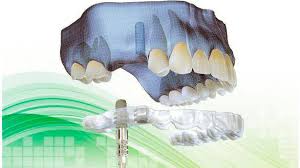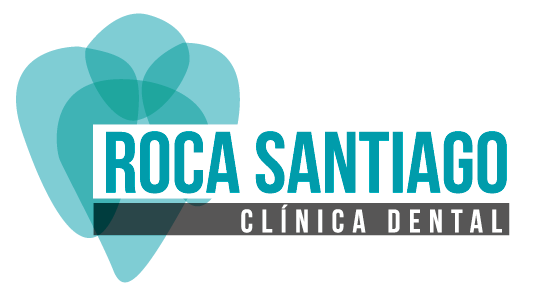CIRUGÍA GUIADA
Computer-guided implant surgery provides minimally invasive surgery and immediate post-surgical prosthetics.

WHAT IS GUIDED IMPLANT SURGERY?
Computer-guided implant surgery can be defined as the precise execution of a treatment plan based on a CAT study that provides exhaustive knowledge of the patient’s anatomy and that, by manufacturing personalised guidance devices (surgical guide templates), allow the precise transfer of planning to the patient’s mouth, enabling minimally invasive surgeryprotocols and immediate post-surgical prosthesis.
The use of technologies that generate three dimensional anatomical models from a computerized tomography of each patient allows the oral or maxillofacial surgeon and the restoration dentist to digitally determine the position, length and ideal diameter of the implants with regard to the future prosthetic restoration that is suitable for each case. This virtual planning is used to create a stereolithographic medical model (laser light curing acrylic resin) of the patient’s jaw and/or upper jaw bone is created, and a stereolithographic surgical template is produced to allow the implants to be fitted in the mouth in the position planned on the computer. Stereolithographic surgical templates contain metal cylinders oriented in the same direction as the vertically planned implants. The drilling and implant placement sequence is performed through these tubes, with the surgical template positioned in the patient’s mouth, thereby transferring the computer planning to the patient’s mouth.
GUIDED IMPLANT SURGERY PROCEDURE
- Double scan of the patient.
- The use of software for study and planning.
- The guide order is sent to the manufacturing company over the internet and the stereolithographic anatomical model of the upper jaw and/or jaw is received by courier service, with the corresponding surgical template in the same material. This system also offers the possibility of manufacturing immediate temporary implant-supported prostheses by placing the prosthetic attachments corresponding to each implant manufacturer on the surgical templates and then casting them in plaster, to obtain a master model on which the dental prosthesis laboratory technician will make the provisional prosthesis in acrylic resin prior to surgery. This will be fitted and adjusted immediately after the fitting of the implants in the mouth without the need for taking impressions between operations.
ADVANTAGES
- It is a minimally invasive surgery, which reduces post-op recovery time, or eliminates it completely.
- Greater control when operating in situations where we are going to be in close contact with major bone structures.
- Better management in patients with heart conditions, diabetics or who are on anti-coagulates, as the surgery is simplified as much as possible.
- The patient is present during the planning and participates in the final result.
- The possibility of wearing a temporary prosthesis on the implants, during the same process.
DISADVANTAGES
- A need to use long instruments, the mouth opening in posterior sections is very limited, so it will not be possible to carry out this process on some patients.
- More bone overheating and more bone dust in the implant bases resulting from the osteotomy, due to poorer interoperative irrigation with cold saline serum, as the surgical templates act as a barrier, which could negatively affect the osseointegration process.
TRY US OUT
THE FIRST APPOINTMENT IS FREE. GET AN APPOINTMENT:952 58 36 83.
If you prefer, you can complete the form and we will contact you.
